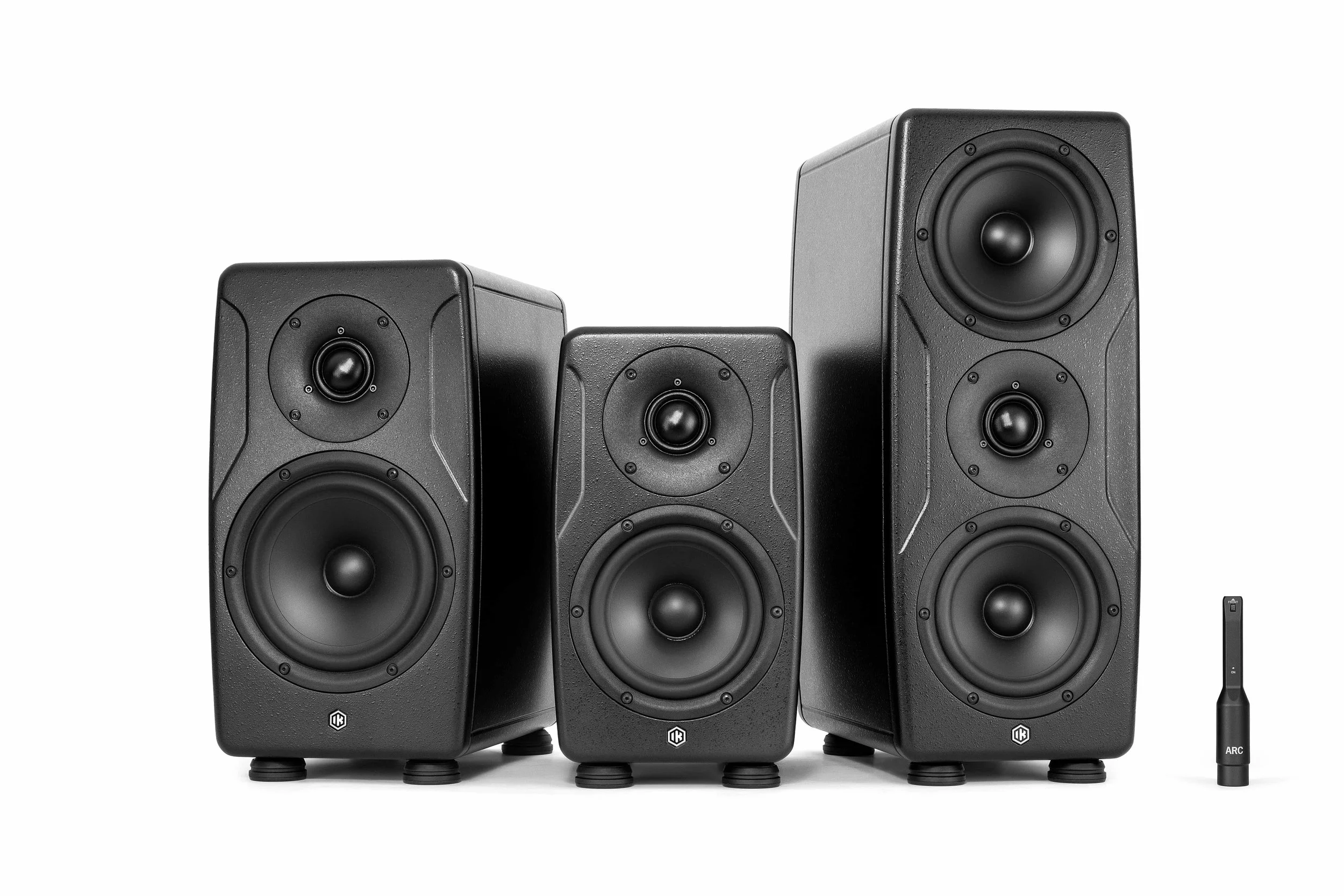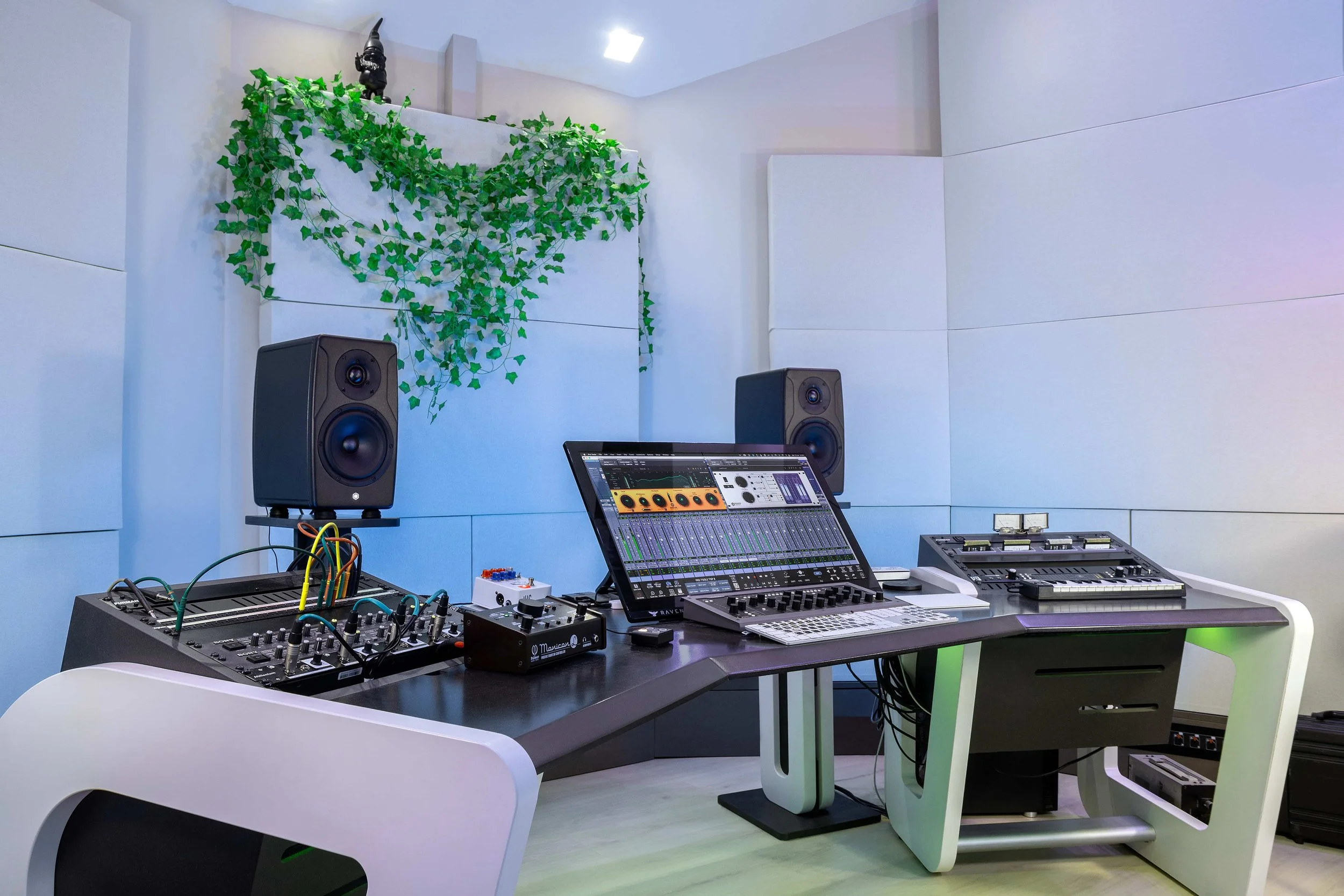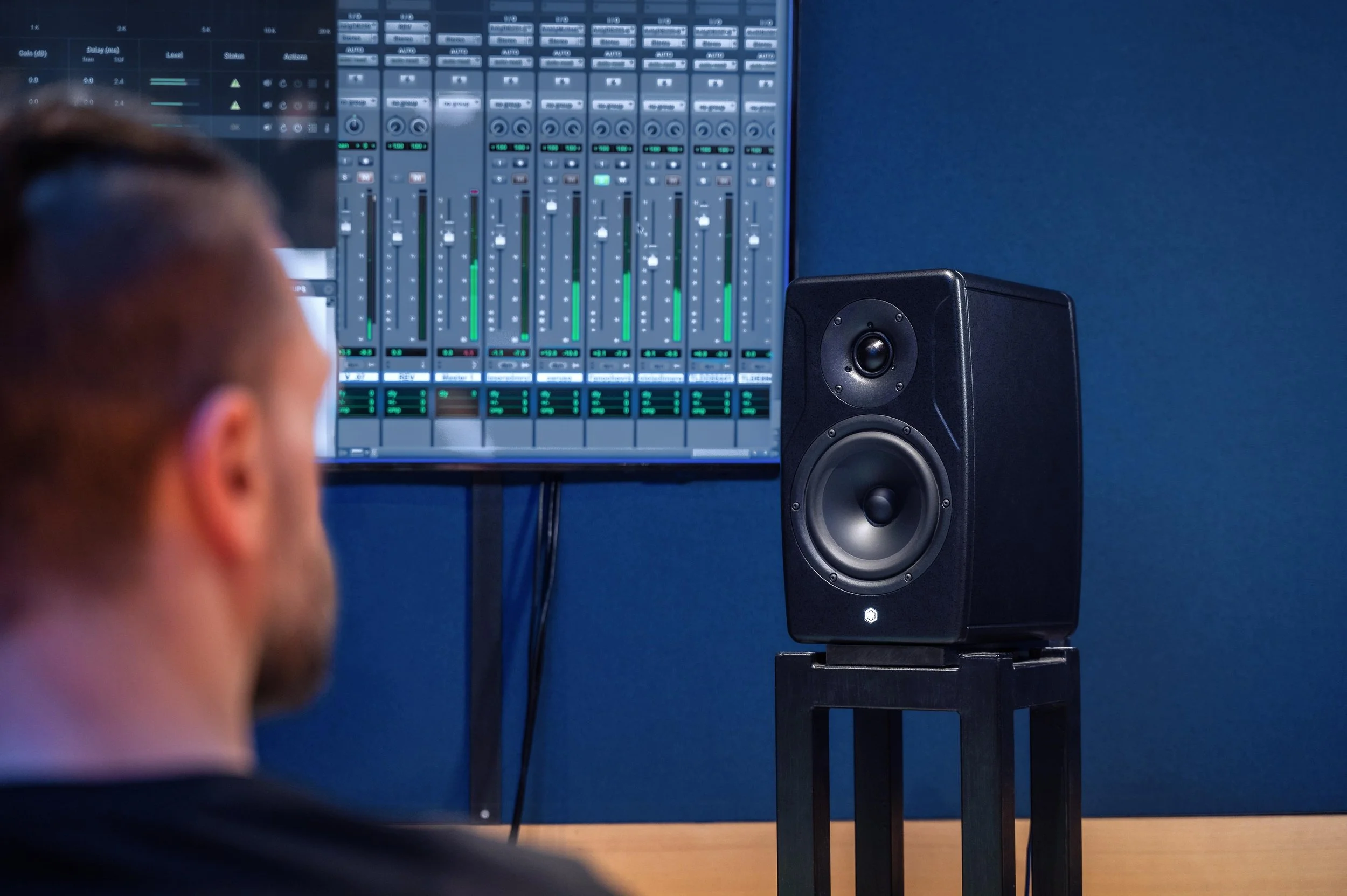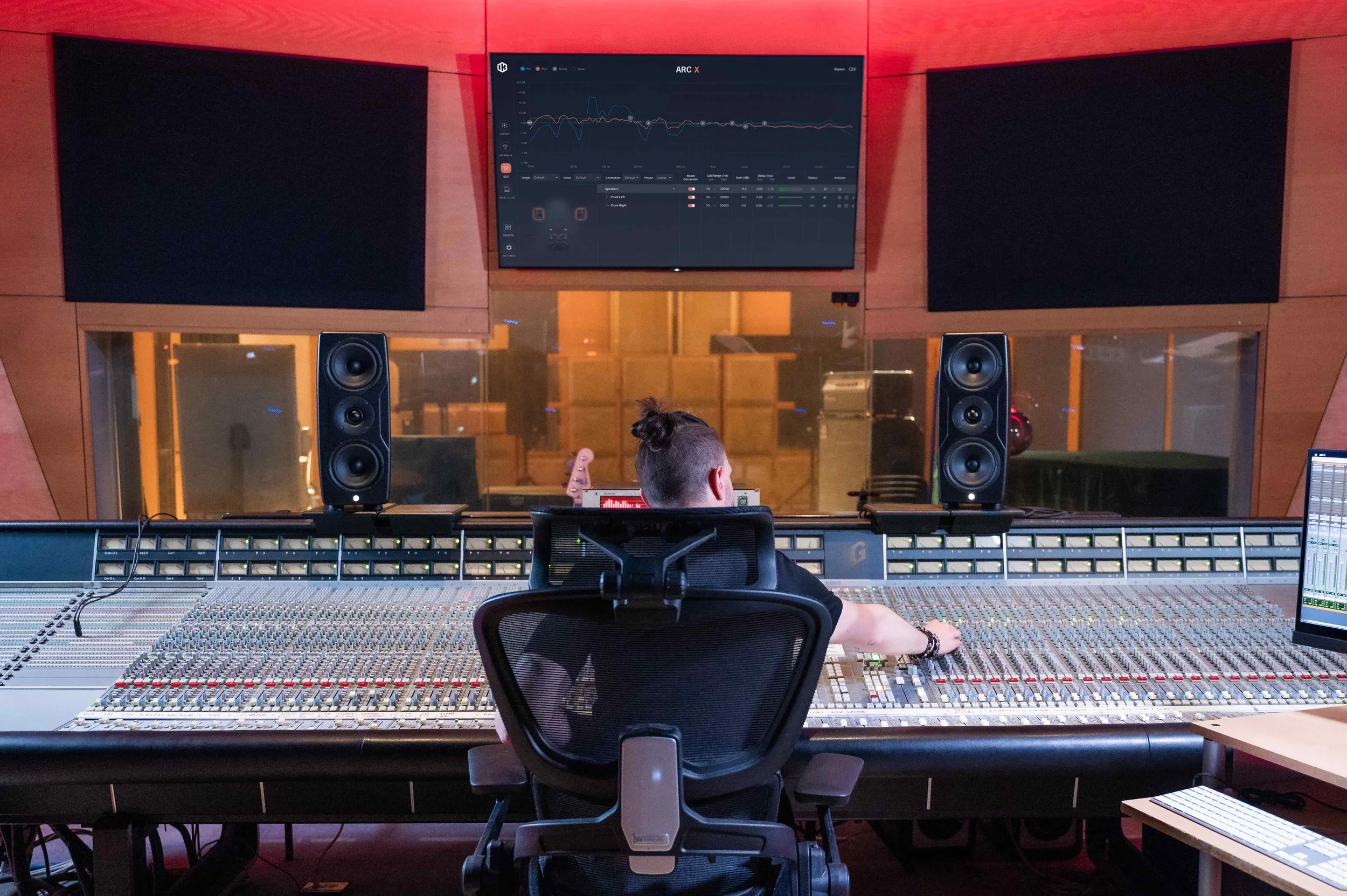iLoud Precision MKII: Are IK Multimedia’s New Studio Monitors For You?

When IK Multimedia first dropped the original iLoud Precision line in 2022, it caught a lot of people off guard. This was the company best known for affordable monitors and mobile-friendly gear suddenly stepping into pro territory with speakers that punched well above their weight. Fast-forward three years, and the new iLoud Precision MKII lineup is here—not a cosmetic refresh, but a serious upgrade aimed at cementing IK’s reputation in high-end monitoring. What makes this release interesting isn’t just the improved cabinets and graphene-reinforced tweeters—it’s the intent. IK is doubling down on features like ARC X calibration and mounting options for immersive setups, signaling that these monitors aren’t just for bedroom producers looking to level up. They’re pitched directly at professional studios and engineers who want accuracy, translation, and flexibility without shelling out Genelec-level cash.
This site contains affiliate links. If you book or purchase through these links, I may earn a commission at no extra cost to you. This helps support the site and keeps my content free. As an Amazon Associate, I earn from qualifying purchases.
What’s new in MKII
The iLoud Precision MKII series isn’t just a minor update—it’s a full rethink of how IK wants these monitors to stand up in professional rooms. The headline change is the new graphene-reinforced tweeter. Graphene is ultra-stiff and light, which in speaker terms means lower distortion at high frequencies and a smoother, more detailed top end. Pair that with redesigned cabinets that tighten up transient response and stereo imaging, and you’ve got monitors that aim to compete directly with the established heavyweights.
IK has also added mounting options that make these monitors a stronger fit for immersive and Atmos setups. Whether you need them on walls, ceilings, or part of a larger multichannel rig, the MKII range is ready to slot in without awkward workarounds. That’s a subtle but important change for studios trying to future-proof their space.
Finally, the MKII line is fully integrated with ARC X, IK’s new generation of auto-calibration tech. With the included MEMS measurement mic, you can dial in the room response quickly, then call up virtual monitor profiles or advanced voicing curves right inside the speaker DSP. For producers working in less-than-perfect rooms—or anyone who bounces between different environments—this is a huge value add that goes way beyond cosmetic upgrades.
Features & Specs Deep Dive
The iLoud Precision MKII lineup comes in three flavors: the 5 MKII, the 6 MKII, and the MTM MKII. All three share the same design philosophy, but the differences in driver size and layout let you choose how much headroom and low-end extension you need. The Precision 5 MKII pushes out 135 W RMS with a frequency response of 46 Hz–30 kHz (±1 dB) and extends down to 39 Hz at –4 dB. Step up to the 6 MKII and you’re looking at 150 W RMS, a slightly deeper response of 45 Hz–30 kHz (±1 dB), and usable bass down to 37 Hz. The MTM MKII is the heavyweight: 175 W RMS, with the same bass extension as the 6 MKII but in a symmetrical design that sharpens imaging and phase alignment.
Under the hood, every model runs on a 96 kHz DSP engine with linear-phase crossovers and time-coherent design. Translation: you get smoother driver integration, precise stereo imaging, and mixes that don’t fall apart when you switch listening environments. IK also includes isolation pods right in the box, keeping vibrations from coloring your low end. If you want extra control, there’s an optional wired remote that makes it easy to toggle voicings or monitor profiles on the fly.
Sonically, these numbers and design choices suggest a monitor that aims for clarity and accuracy rather than hyped response. The extended high end from the graphene tweeter should mean cleaner transients and less ear fatigue over long sessions. Meanwhile, the low-end figures are competitive for monitors this size—enough punch to handle electronic, hip-hop, or cinematic work without forcing you into a subwoofer, though you’ll still want one for truly full-range or immersive rigs. All told, IK is positioning the MKII series as a serious, DSP-driven alternative to industry-standard nearfields.
Are These the Right Monitors for You?
Choosing studio monitors isn’t just about specs—it’s about whether they fit your workflow, your room, and the way you like to mix. The iLoud Precision MKII range is designed for people who want pro-level translation without going all-in on ultra-premium brands. The addition of ARC X calibration is a big deal here: if your room isn’t perfectly treated—or if you’re moving between spaces—having calibration baked right into the monitors can save you from endless second-guessing. For producers and engineers who need their mixes to hold up across systems, that alone can make these worth the jump.
Another thing to weigh is how you like to monitor over long sessions. The new graphene tweeters should reduce fatigue, which matters if you’re spending hours sculpting detail in vocals or electronic textures. Add the improved cabinet design and you’re looking at monitors that aim for stability and imaging you can trust. These aren’t “fun” or hyped speakers—they’re built to tell you the truth about your mix, even if that truth stings.
That said, price is a factor. The MKII series is no longer “budget-friendly” like IK’s older monitors; they’re staking a claim in the same space as Genelec, Neumann, and Focal. If you’re ready to invest in accuracy and flexibility but don’t want to dive into a closed ecosystem, the iLoud Precision MKII makes sense. Within the lineup, the 5 MKII is best if you’re working in smaller rooms or need compact nearfields; the 6 MKII gives you more headroom and low-end reach for heavier genres; and the MTM MKII is ideal if imaging and center accuracy are your top priority—or if you’re building out an immersive setup.
Alternatives Worth Considering
No studio monitor exists in a vacuum, and the iLoud Precision MKII series lands in a hotly contested space. If you’re shopping at this level, you’ll want to know how they stack up against some of the industry’s most respected options.
The most obvious benchmark is Genelec’s 8300 SAM series. Models like the 8330 and 8340 have been a staple in pro studios for years, thanks to their ultra-precise voicing and the GLM calibration system. GLM isn’t just about flattening your room response—it offers detailed analytics and seamless integration in stereo or immersive rigs. If you want a proven ecosystem that scales from nearfield to Atmos with ease, Genelec remains the standard many engineers measure against.
Another strong contender is the Neumann KH 120 II (or its bigger sibling, the KH 150). These are widely praised for their linear response and mix translation, and when paired with Neumann’s MA 1 calibration system, they deliver a level of accuracy that rivals speakers twice the price. If you value neutrality above all else, Neumann makes a compelling case.
On a slightly different angle, ADAM Audio’s A7V brings in Sonarworks SoundID integration directly into the monitor DSP. That means you can calibrate with SoundID and store profiles right in the speaker, which is a big draw if you’re already using that system. Meanwhile, Focal’s Solo6 ST6 goes for a more audiophile flavor, with a Focus Mode that lets you bypass the tweeter for a midrange-only view of your mix. Engineers who want both detail and vibe often gravitate toward these.
Compared to these alternatives, the iLoud Precision MKII finds its edge in combining strong DSP features with an approachable price point. While Genelec and Neumann may carry more legacy weight, IK’s package of graphene tweeters, ARC X calibration, and immersive-ready design puts them in the same conversation—especially for studios that want accuracy without being tied to a proprietary ecosystem.
For more info, click here to read our guide about the best home studio monitors.
Final Words
With the iLoud Precision MKII series, IK Multimedia is making a clear statement: these aren’t “budget monitors with extras,” they’re aimed squarely at professional engineers and producers who demand accuracy. Between the graphene tweeters, the redesigned cabinets, and full integration of ARC X calibration, the MKII line feels less like a follow-up and more like a repositioning—an attempt to put IK shoulder-to-shoulder with Genelec, Neumann, and Focal in serious monitoring discussions.
At around $799.99 for the 5 MKII, $899.99 for the 6 MKII, and $999.99 for the MTM MKII (per speaker), these aren’t impulse buys. But when you factor in what’s included—the calibration mic, built-in DSP, isolation pods, and immersive-ready hardware—the value proposition is strong. If you’re building your first serious mixing space, they offer a lot of confidence out of the box. If you’re upgrading, they give you features that normally live in much more expensive ecosystems. Bottom line: if accuracy, flexibility, and future-proofing matter to your workflow, the iLoud Precision MKII series deserves to be on your shortlist.
If you’re ready to upgrade your monitoring, explore the latest deals on the iLoud Precision MKII series.
This site contains affiliate links. If you book or purchase through these links, I may earn a commission at no extra cost to you. This helps support the site and keeps my content free. As an Amazon Associate, I earn from qualifying purchases.




